Researcher and curator Lea Cooper explores the idea of ‘crip doulas’ through zines created by disabled zine makers, which feature in ‘Zines Forever! DIY Publications and Disability Justice’, a display at Wellcome Collection.
Zines as 'crip doulas'
Words by Lilith (Lea) Coopercommissioned by Lalita Kaplish
- In pictures
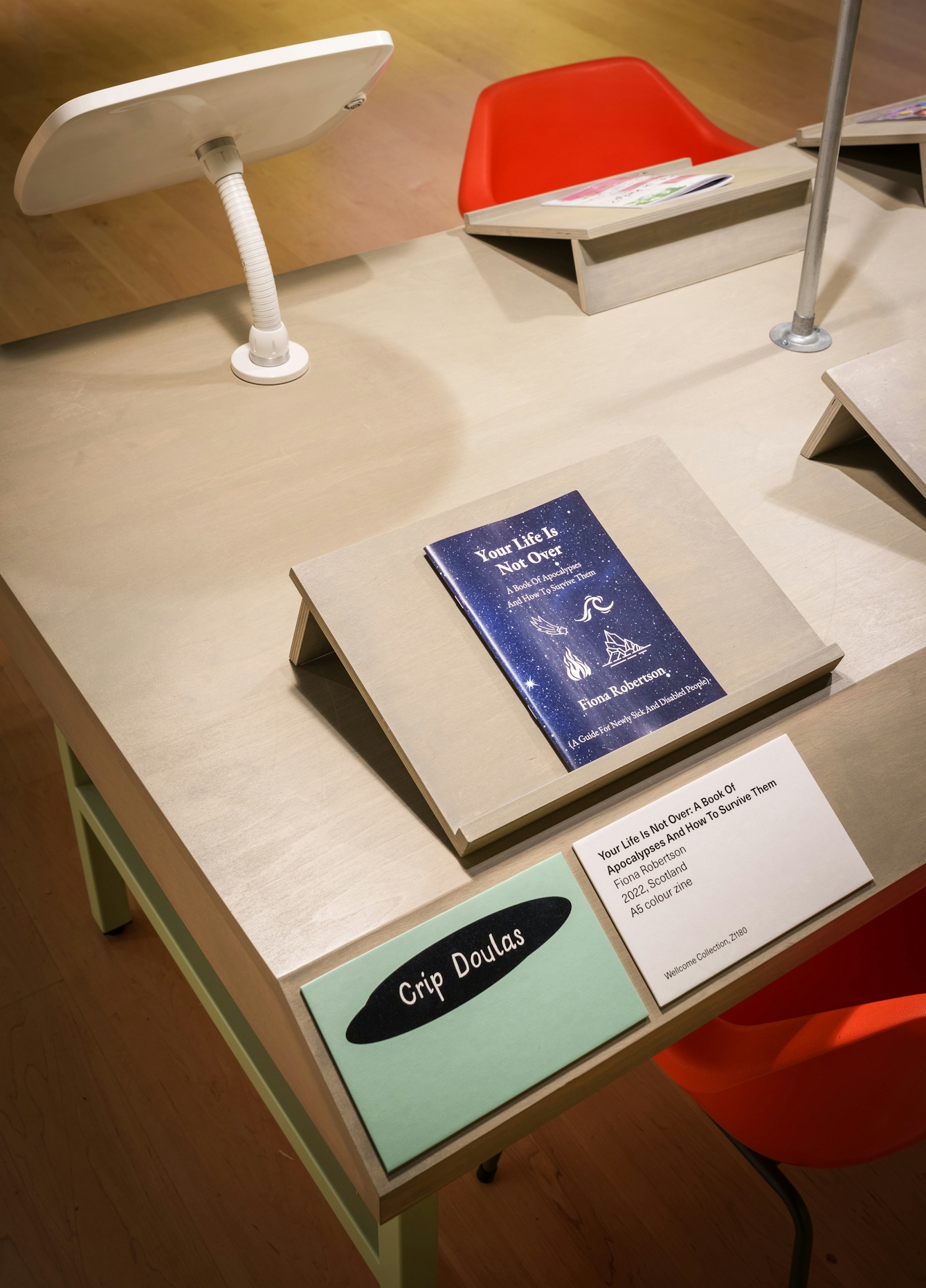
The term ‘crip’ is used by some disabled people to describe themselves. Reclaimed from a historic and derogatory term used to describe disabled people, it is used to celebrate disability, as well as engage with it as a political identity, and to connect with the Disability Justice movement. Disability Justice activist Stacey Park Milbern used the term ‘crip doulaing’ to describe the ways that disabled people offer support to others throughout the experience of being or becoming disabled. The ‘crip doula’ draws on ideas of a doula as a non-medical guide offering practical and emotional support through major life changes such as pregnancy, childbirth or end-of-life care.
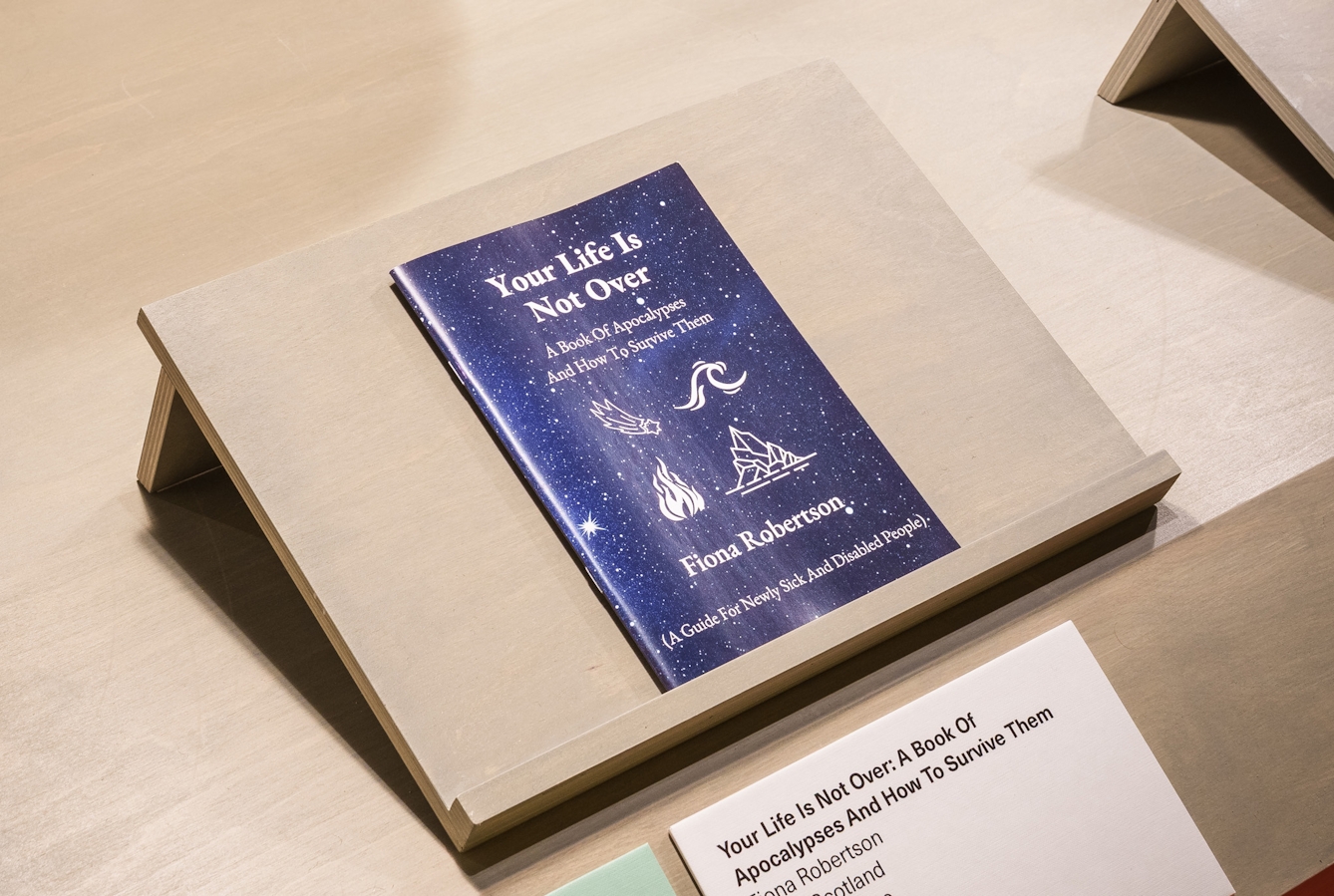
In ‘Your life is not over’(view in catalogue), Fiona Robertson intersperses practical advice (in sections including ‘Rest’, ‘Doctors’, and ‘The Disability Community’) with poetry. It was one of the first zines I thought of when I began to consider how zines might engage in practices of ‘crip doulaing’. In her introduction, Fiona describes her own experiences of being ‘doulaed’: “When I finally encountered disability activists who taught me about disability politics, I was close to the end of my life. I thought not getting better was my fault, and had internalised the stories about disability which doesn’t improve – that you died. They showed me another path. A story I’d never heard before.”
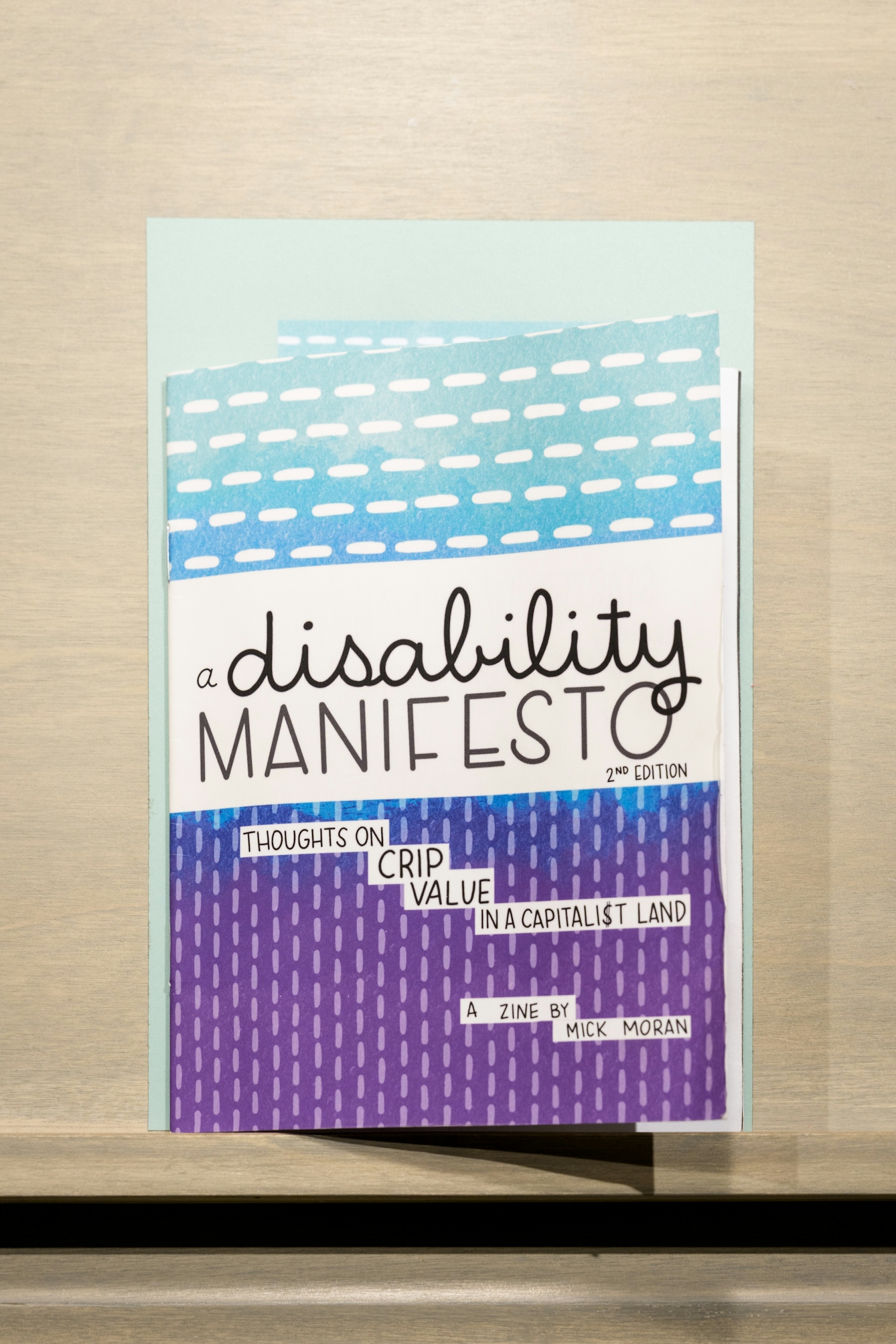
I was happy to find that I wasn’t the only person thinking about ‘crip doulaing’ and zines together. Mick Moran is both a radical full-spectrum doula, and a comic artist and zine maker. Their zine, ‘Disability Manifesto(view in catalogue)’, captures their engaging and immediate visual style and use of different hand lettering. Moran addresses the external narratives that circulate around disability in a capitalist society that equates a person’s value with their ability to be productive, while offering a series of affirmations for disabled people experiencing internalised ableism.
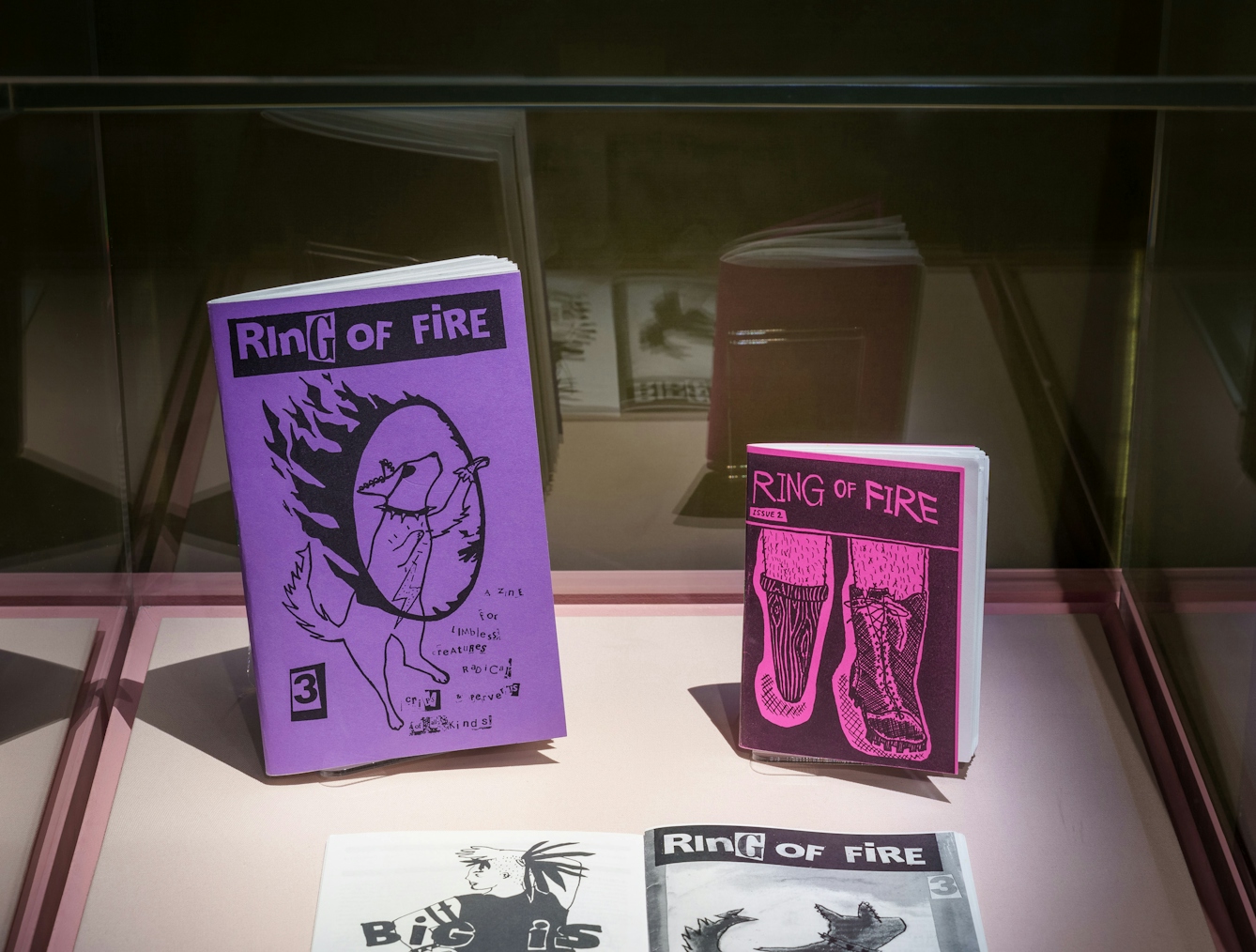
Artist E.T. Russian created issues of ‘Ring of fire’ between 1996 and 1999 after acquiring a disability as a young adult. Through writing, images, poetry and erotica, the zine explores a range of topics from Russian’s life during this period. ‘Ring of fire’ captures Russian’s formative experiences as they make sense of their own identity and shows how we often turn to other disabled people, in real or imagined ways, to make sense of our own experiences and identities. In the 2014 anthology version of ‘Ring of fire’, they reflect on the original zines:
“When I first wrote ‘Ring of fire’, I was working out so much about my disability, my sexuality and gender … Really, I think that I was trying to explain it to myself, and it just happened to be helpful to other people who were also new to disability as a concept.”
As well as the individual issues of the zine, there’s a printed anthology of the ‘Ring of fire’(view in catalogue), which you can also read in the exhibition.
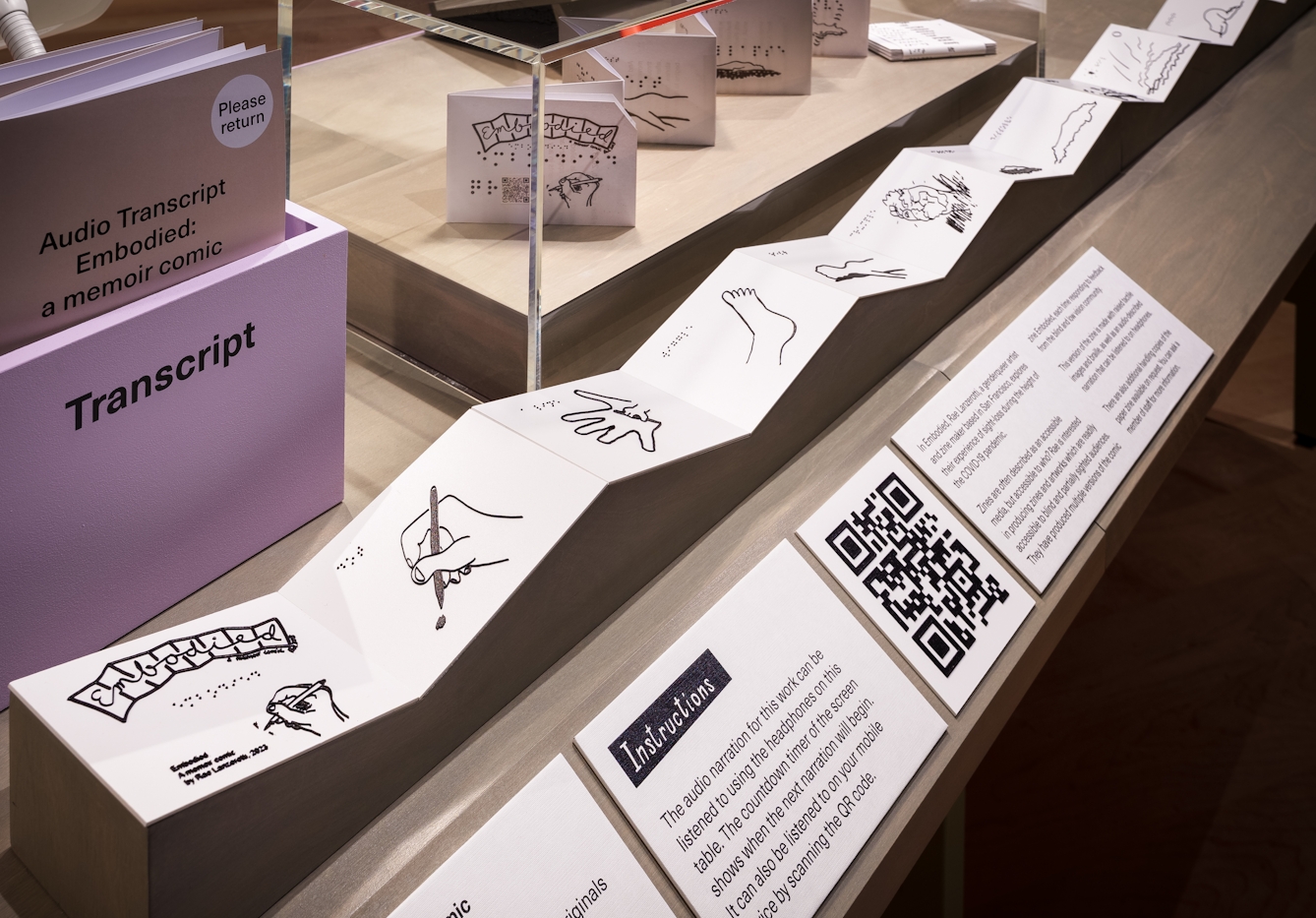
In their concertina comic zine ‘Embodied(view in catalogue)’, Rae Lanzerotti, a genderqueer artist and zine maker based in San Francisco, explores their experience of sight-loss during the height of the COVID-19 pandemic. They have created multiple versions of the zine, each time responding to feedback from the blind and low-vision community. The first version of the zine was an audio process narration, which incorporates image description into the story narration. The most recent editions, including this one, laid out in ‘Zines Forever!’, which includes tactile elements, audio narration, and BSL translation.
Zines are often described as being accessible because, for many people, they are easier to make and distribute than a commercial magazine or a book. However, many recognisable qualities of zines, such as small handwriting or poor-quality photocopying, can make them inaccessible to people who are blind, low-vision or partially sighted. Conventionally, access elements are added to accommodate disabilities after a work has been completed; in contrast, Rae’s approach in creating 'Embodied’ centres disability access as an integrated and iterative part of the creative process.
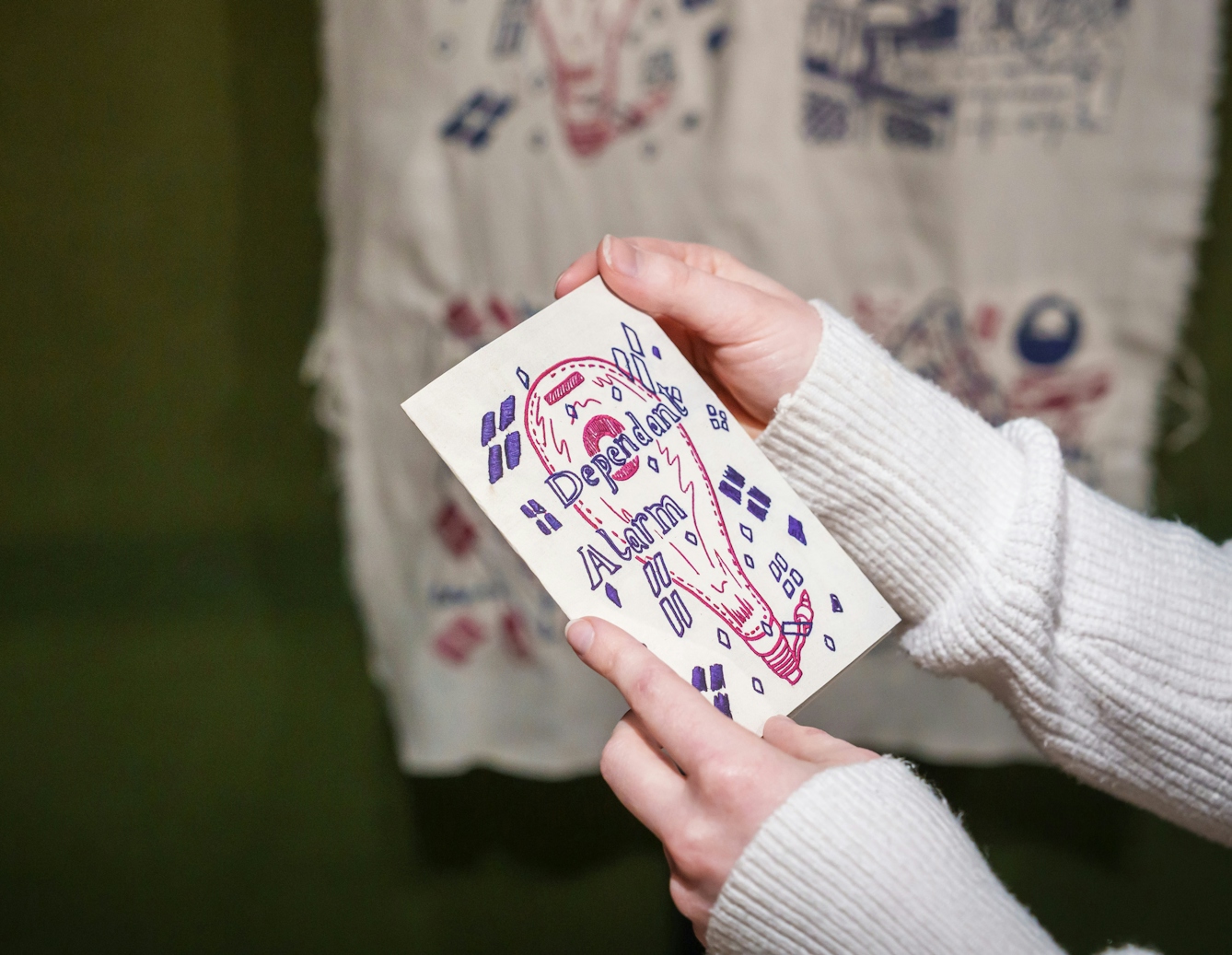
Care, and care work, are essential features in ‘crip doulaing’. In ‘Dependent alarm(view in catalogue)’, artist Chloe Heffernan translates her large textile work, which is displayed in ‘Zines Forever!’, into a zine. The zine explores her caring relationship with her mother. Its title refers to a device given to disabled people by their local council and used to contact a caregiver for support. The labour involved in both receiving and delivering home care is sometimes overlooked and ignored by policymakers and society at large, and there is often very little information or support available for carers. The title ‘Dependent Alarm’ also invites the reader to consider questions of inter/dependence, and the ways in which care might circulate or be experienced in their own lives.
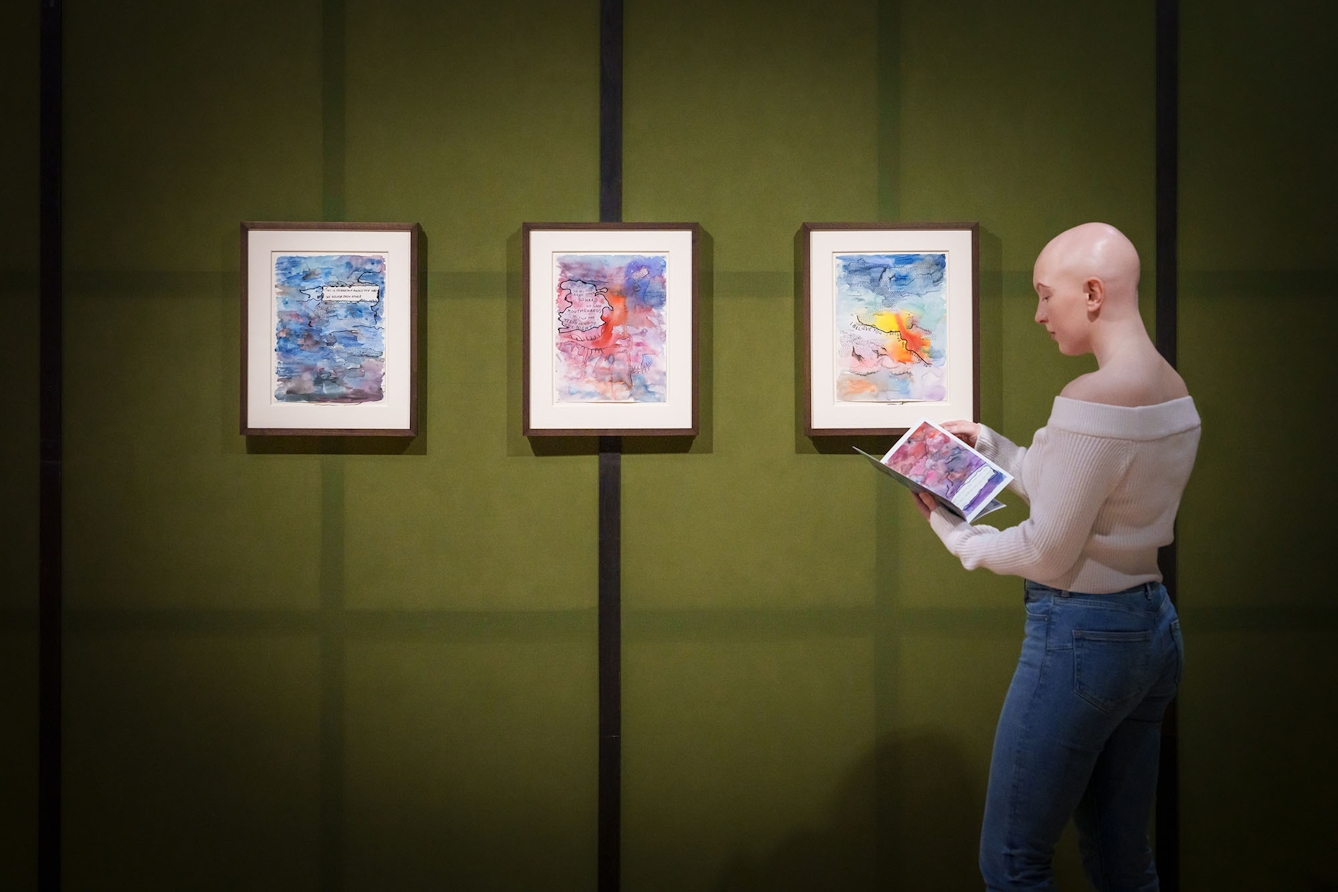
Disabled joy and positivity are important to counter the commonplace negative framing of disability and disabled people, but they can obscure how being and becoming disabled includes a complex range of emotions, including grief, anger and exhaustion.
‘Believing: a zine about love and loss among the mad(view in catalogue)’, a zine from Mad zine maker and artist Rachel Rowan-Olive, is made up of pages of watercolour painting, textured with fine liner and handwritten text. The original watercolours are on display alongside the zine in ‘Zines Forever!’ They create strange landscapes, with the pen lines feeling like lines that mark maps or track the flow of water, and sometimes like stitches on a quilt. In the zine, Rowan-Olive explores the act of belief as central to the Mad community and engages with the grief of being a psychiatric survivor. Belief and self-identification are areas where ‘Mad’ and ‘crip’ experiences overlap. ‘Disabled’ is not an identity given to you, but something you claim yourself, with the support, the belief, of the crip community.
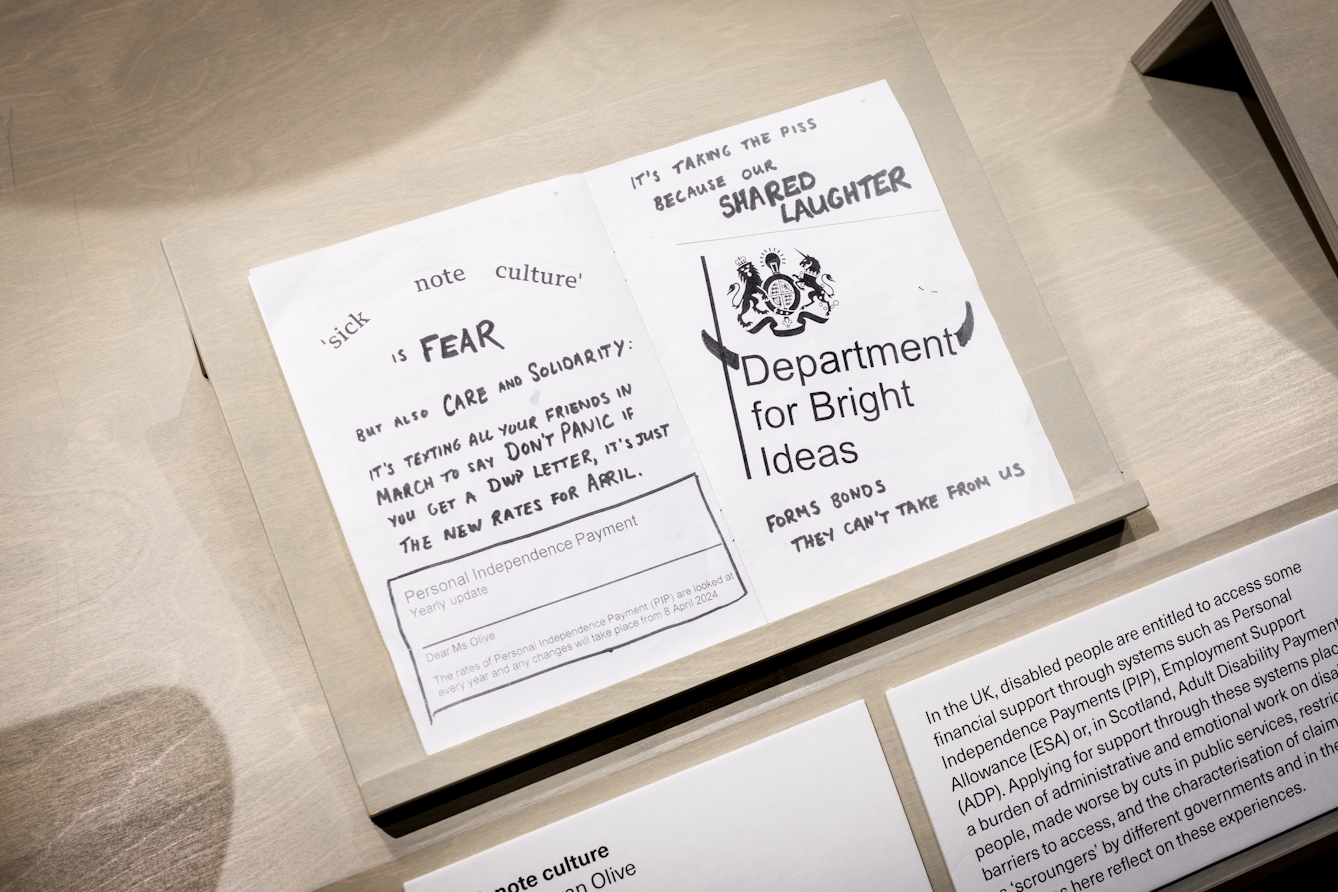
Zines can provide vital support in addressing the anxiety and fear around engaging with welfare and benefits systems. In 'Sick note culture(view in catalogue)', a cut-and-paste zine from Rachel Rowan-Olive, she responds to the April 2024 announcement from the UK government that they would tackle so-called sick note culture. The speed with which zines can be made allows them to respond almost immediately to changing events and circumstances. Rowan-Olive’s response to anxiety and fear around disability benefits finds a parallel in zine researcher Kin-long Tong’s descriptions of how Hong Kong’s protest zines counteract “the fear and insecurity generated by state violence”.
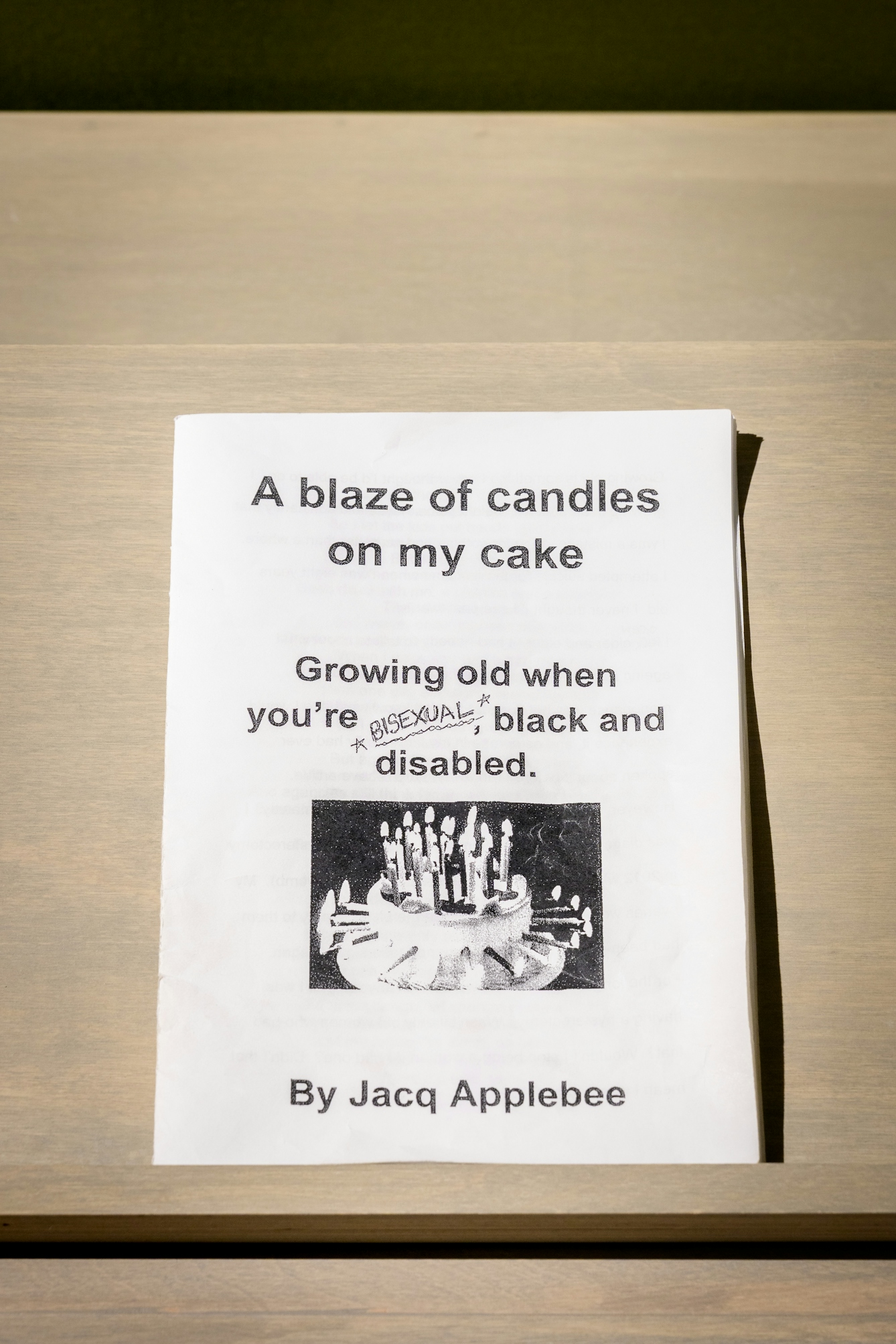
‘A blaze of candles on my cake(view in catalogue)’ is an example of how zines can hold space for feelings that come up during times of transition, offering important perspectives that might be missed. This zine provides an intersectional perspective on aging while bisexual, Black, and disabled. Combining prose, song lyrics, and images, it acknowledges multiplicity while not shying away from addressing the negative impacts of racism, biphobia, ageism, and ableism.

The digital zine ‘What does an uprising doula do?(view in catalogue)’ was created by WHAT WOULD AN HIV DOULA DO? (WWHIVDD), a collective formed in response to the ongoing AIDS crisis. The collective thinks of HIV infection as a series of transitions and the work of a doula as holding space during times of transition. Their work includes workshops, exhibitions, artworks, event programmes, resources, and zines. The zine challenges some of our ideas about what a zine is because, despite its digital format, it is the result of many of the same practices and has many of the qualities as a paper zine. The digital format echoes other forms of crip doulaing that happen among online communities.
Like zines themselves, the ‘Zines Forever!’ display contains multiple formats, beyond traditional photocopied zines – inviting a consideration of how both zine and crip doulaing practices are manifested in print, paint, paper, textile, audio and digital media.
The 'Zines Forever!' display is at Wellcome Collection from 14 March 2025 – 14 September 2025.
About the contributors
Lilith (Lea) Cooper
Lea Cooper is a zine-maker and zine librarian at Edinburgh Zine Library. They recently completed a practice-based PhD working with the zines at Wellcome Collection. They live on the Fife coast in Scotland.
Lalita Kaplish
Lalita is a digital content editor at Wellcome Collection with particular interests in the histories of science and medicine and discovering hidden stories in our collections.

